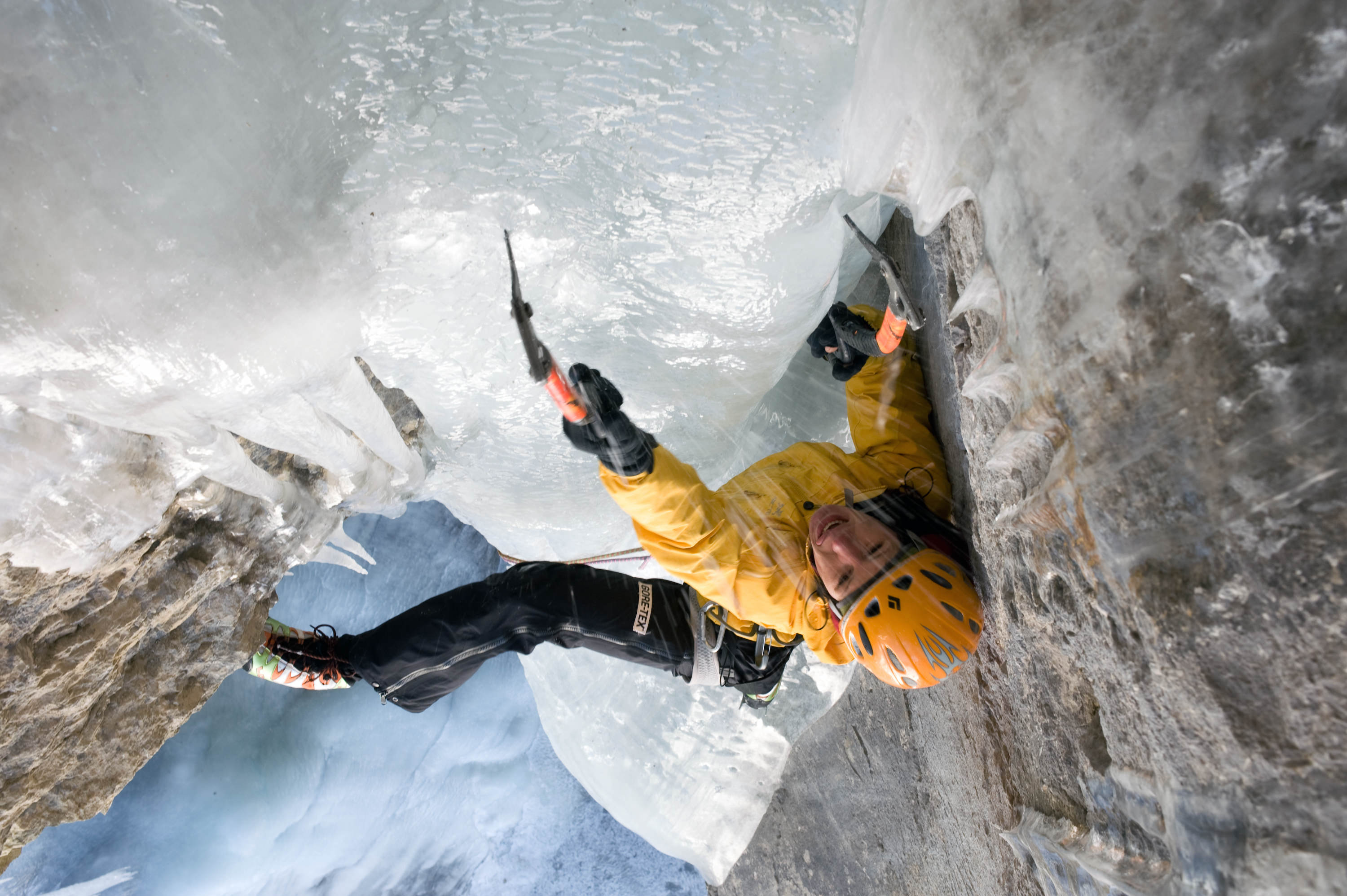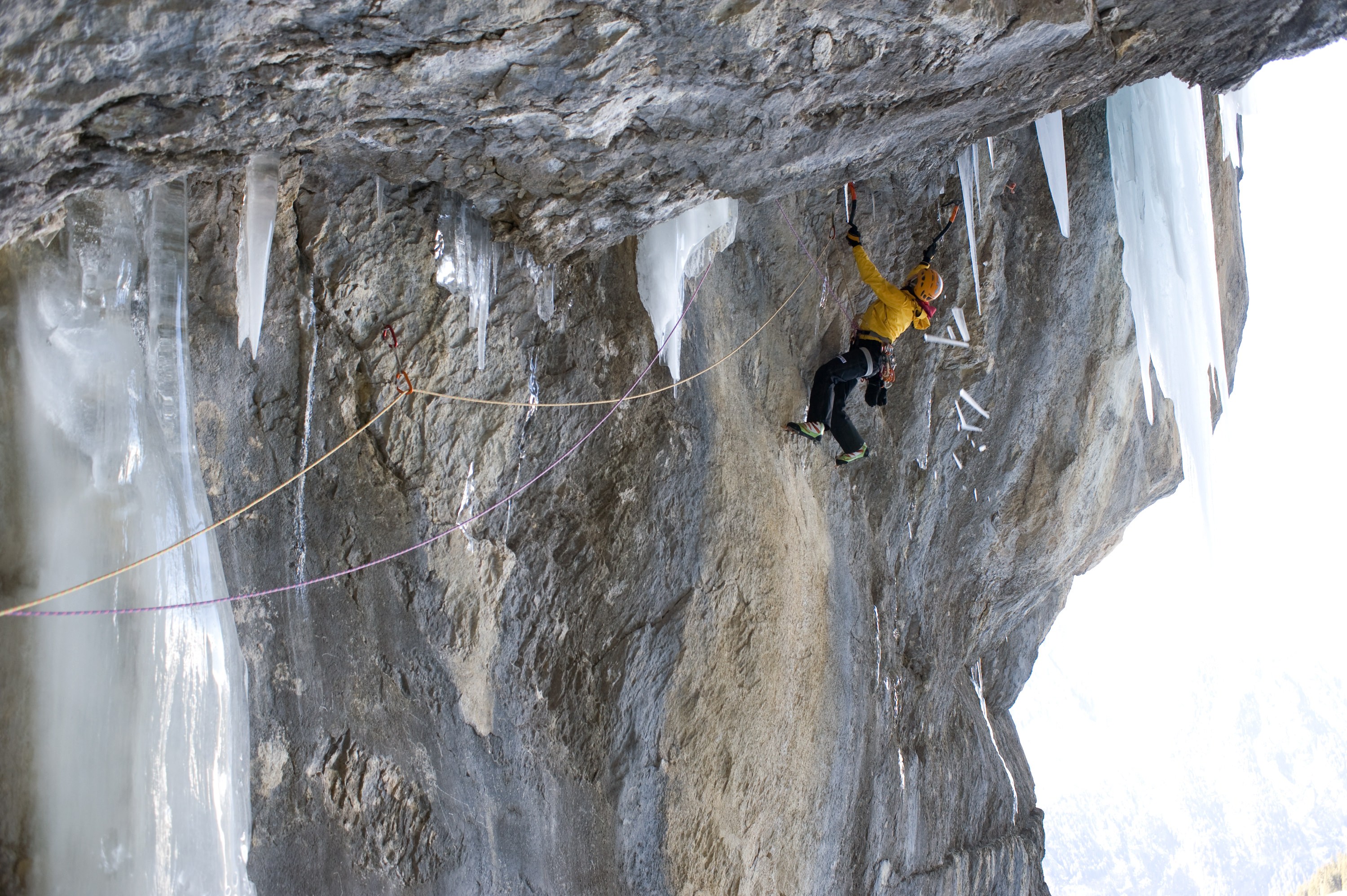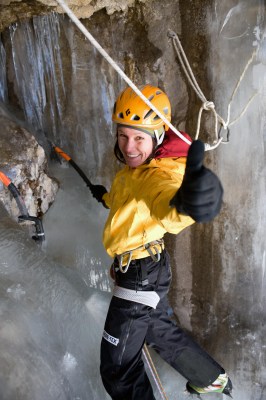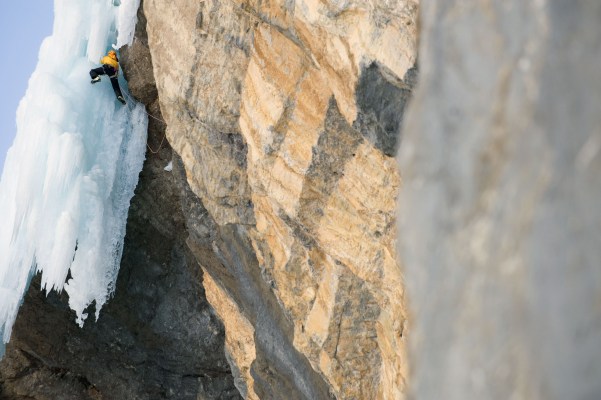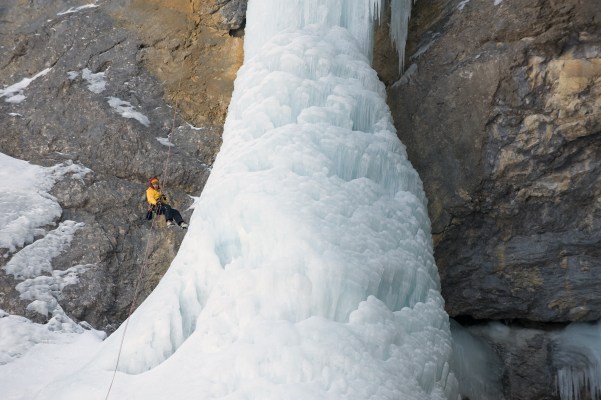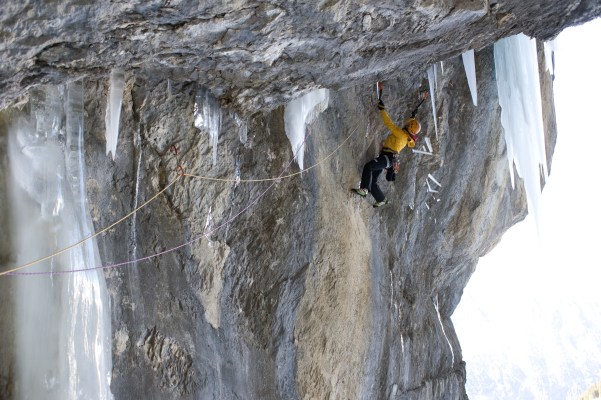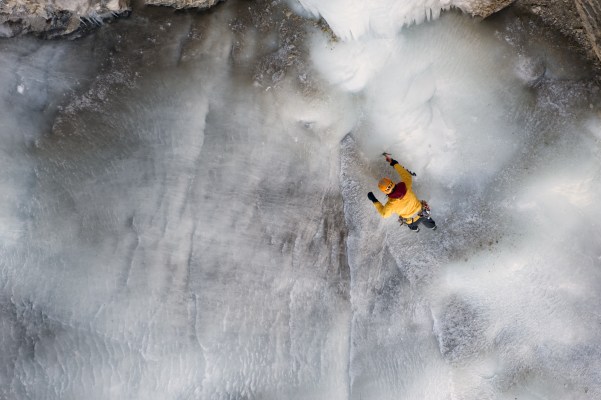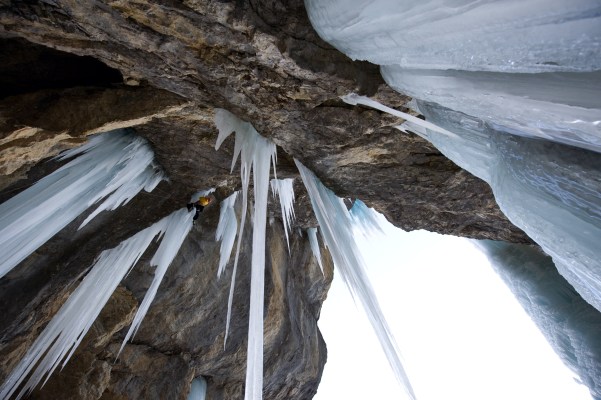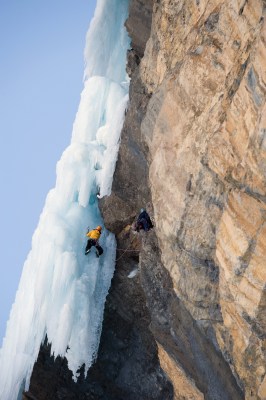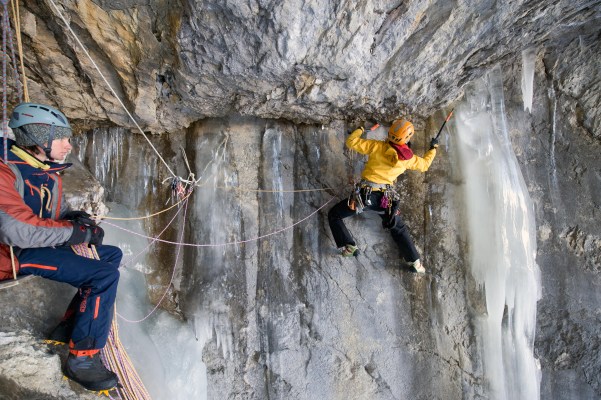Bodytext
Interview by climbandmore.com
ClimbandMore: I guess you are familiar with the history of Flying Circus. The first ascent was done by Robert Jasper. As far as we know the route was repeated by some Swiss climbers: Gabriel Grünenwald and Simon Oswald, and Beat Kammerlander. You also mentioned Ralf Weber’s ascent last year. Is that all?
Ines Papert: First onsight was done by Michi Wärthl. It was followed by the Swiss ascents you have mentioned. I think it also had other ascents, but I do not know the names.

When you did Mach 3 and Crack Baby 3 years ago, were you already interested in repeating Flying Circus?
I had Flying Circus in mind since 2005. Unfortunately the ice did not fully come down over the overhang. I decided to wait for the perfect conditions, so I had a chance of onsighting the route. Also the World Cup in 2006 made it impossible for me to be very flexible and fit my schedule to current conditions. Since I dropped out of competition circle it is much easier to be in the right place in the right time, which is crucial to ice and mixed climbing at this level.
Will Gadd said that in general on-sights on mixed climbs are much harder than on the rock - that in this game the difference between RP and OS is even bigger than in rock climbing. Would you agree? Did you have a difficult time looking for placements or finding the perfect line during climbing Flying Circus?
It is hard to agree with Will 100%. That depends on the amount of ice on the given route (which lowers the difficulties significantly) and also on whether the route gets climbed a lot. On Flying Circus finding the correct line was fairly easy. The route also does not have single crux moves, the main difficulties are trusting your pro and having a strong head. There are however several pitons, which you cannot fully trust, not sure if they would hold a fall. The ability to use stubby ice screws gave me more confidence. The whole time on the route I felt like my abilities exceed the difficulties, I did not feel like I am climbing at my limit. We climbed the route really fast, so I wasn’t day dreaming and I could climb in lightweight shoes.
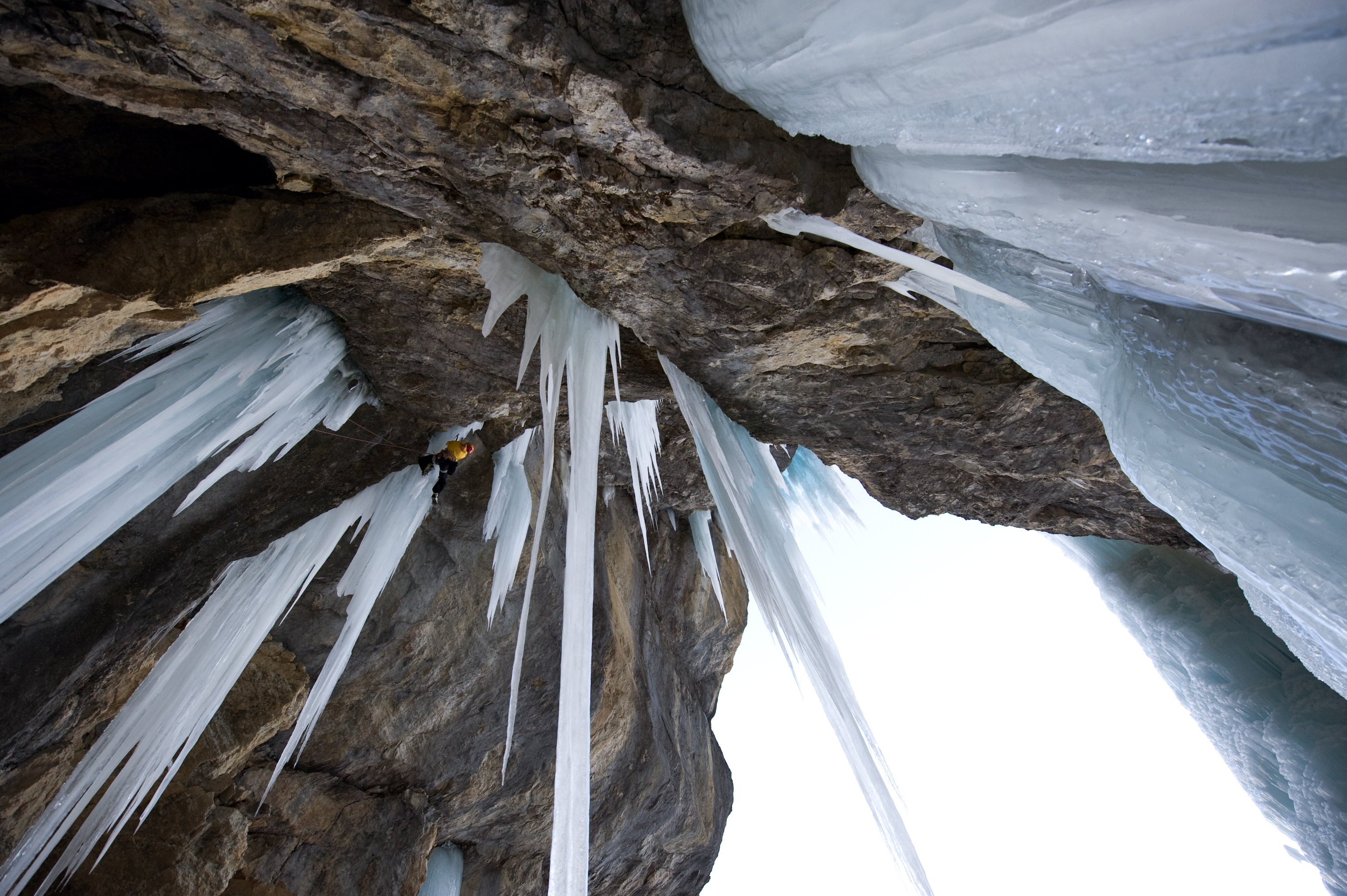
Did making on-sight ascent mean that you also didn’t ask any beta about protection? Or you knew more or less what to expect on a given pitch as concerns protection?
I asked Ralf Weber whether I should take cams and nuts. He told me that 2-3 ice screws would be enough for the first two pitches. That really reduced the amount of gear we had to carry during the two hour approach. I know Ralf very well and I knew I could trust him. I also knew that second anchor, to the right of some loose terrain, is very hard to see.
What was your impression of protection and psychological demands of the route? Robert gave it E4, so it was maybe not too much, but still pretty serious for him.
Hmm…I think that there were several pitons added since the first ascent, but in general I am not sure whether they would hold a fall. I am not able to say whether the difficulties are at E4. You definitely have to feel very comfortable on ice and have a very strong head. The M10 traverse is very exposed and it cost me a lot of nerves. The protection is adequate though. You have to be very careful approaching the ice pillars, the anchors are bolted
